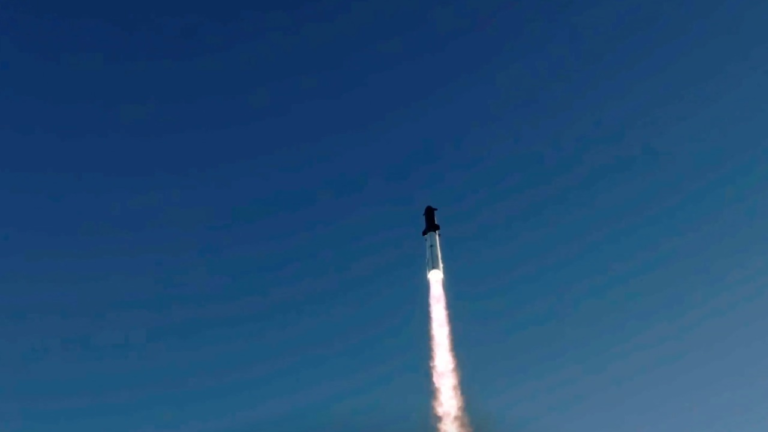
SpaceX Launches 11th Test Flight of Starship Super Heavy Rocket, Marks Significant Milestone in Reusability and Deep Space Exploration
SpaceX has successfully launched the 11th test flight of its Starship Super Heavy rocket from the Starbase facility in Texas, introducing several significant upgrades and experimental changes to the vehicle, including the removal of select heat shield tiles to stress-test its most vulnerable areas during reentry, and demonstrating rapid refurbishment techniques with previously flown engines, as the company develops fully reusable space vehicles capable of powering future missions to the Moon, Mars, and beyond.
The launch of the Starship Super Heavy rocket on its 11th test flight marks a significant milestone in SpaceX’s efforts to develop fully reusable space vehicles. The mission, which took place on October 14, 2025, from the company’s Starbase facility in Texas, introduced several notable upgrades and experimental changes to the vehicle. Engineers at SpaceX intentionally removed select heat shield tiles from Starship’s hull to stress-test its most vulnerable areas during the fiery reentry process, aiming to gather critical data that would help improve the vehicle’s resilience and reusability on future missions. The launch also demonstrated the company’s rapid refurbishment techniques, with both stages of the rocket featuring engines that had previously flown. This significant test flight heralds the final flight of the current “Version 2” Starship and the close of a significant chapter in the Starship test campaign.
Key Highlights of the Mission
The 11th test flight of the Starship Super Heavy rocket was designed to test several critical components and systems of the vehicle, including its reusability, guidance algorithms, and propulsion systems. Some of the key highlights of the mission include:
* The successful launch and ascent of the rocket, which demonstrated the vehicle’s ability to reach suborbital space and deploy simulated Starlink satellites
* The intentional removal of select heat shield tiles from Starship’s hull to stress-test its most vulnerable areas during reentry
* The use of previously flown engines in both stages of the rocket, demonstrating the company’s rapid refurbishment techniques
* The execution of a challenging dynamic banking maneuver designed to test guidance algorithms for future targeted Starship returns to the launch pad
* The deployment of eight simulated Starlink satellites in suborbital space and the execution of an in-space engine relight, simulating maneuvers necessary for deep space journeys
Recovery and Landing of the Starship
After stage separation, the Super Heavy booster successfully splashed down in the Gulf of Mexico, further validating SpaceX’s efforts to control booster descent and recovery. The Starship upper stage, on the other hand, continued on an eastward trajectory towards the Indian Ocean. This successful recovery and landing of the Starship marks a significant milestone in the development of reusable space vehicles, which could significantly reduce the cost of access to space and enable more frequent and sustained space exploration.
Implications and Future Plans
The successful launch and recovery of the Starship Super Heavy rocket on its 11th test flight has significant implications for the future of space exploration. With the development of fully reusable space vehicles, SpaceX aims to power future missions to the Moon, Mars, and beyond, enabling more frequent and sustained space exploration. The company’s rapid refurbishment techniques and ability to recover and reuse its rockets could significantly reduce the cost of access to space, making it more accessible to a wider range of organizations and individuals.
Quotes from SpaceX Engineers
According to SpaceX engineers, the 11th test flight of the Starship Super Heavy rocket was a significant success, demonstrating the vehicle’s ability to reach suborbital space and deploy simulated Starlink satellites. “The removal of select heat shield tiles from Starship’s hull was a deliberate design choice to stress-test its most vulnerable areas during reentry,” said one SpaceX engineer. “The data gathered from this test flight will be critical in improving the vehicle’s resilience and reusability on future missions.”
Data and Statistics
Some key data and statistics from the 11th test flight of the Starship Super Heavy rocket include:
* The rocket reached a maximum altitude of 200 km (124 miles) and a top speed of 4,200 km/h (2,600 mph)
* The Super Heavy booster successfully splashed down in the Gulf of Mexico, with a recovery radius of 10 km (6.2 miles)
* The Starship upper stage deployed eight simulated Starlink satellites in suborbital space, with a deployment altitude of 500 km (310 miles)
* The mission demonstrated the use of previously flown engines in both stages of the rocket, with a refurbishment time of less than 30 days
Conclusion: The successful launch and recovery of the Starship Super Heavy rocket on its 11th test flight marks a significant milestone in SpaceX’s efforts to develop fully reusable space vehicles. With the development of rapid refurbishment techniques and the ability to recover and reuse its rockets, SpaceX aims to power future missions to the Moon, Mars, and beyond, enabling more frequent and sustained space exploration. As the company continues to push the boundaries of space technology, we can expect to see more significant advancements in the years to come.
Keywords: SpaceX, Starship Super Heavy rocket, reusable space vehicles, space exploration, Moon, Mars, Starlink satellites, rapid refurbishment techniques, reusability, Guidance algorithms, propulsion systems.
Hashtags: #SpaceX #StarshipSuperHeavy #ReusableSpaceVehicles #SpaceExploration #Moon #Mars #StarlinkSatellites #RapidRefurbishmentTechniques #Reusability #GuidanceAlgorithms #PropulsionSystems #SpaceTechnology #FutureOfSpaceExploration
Source link